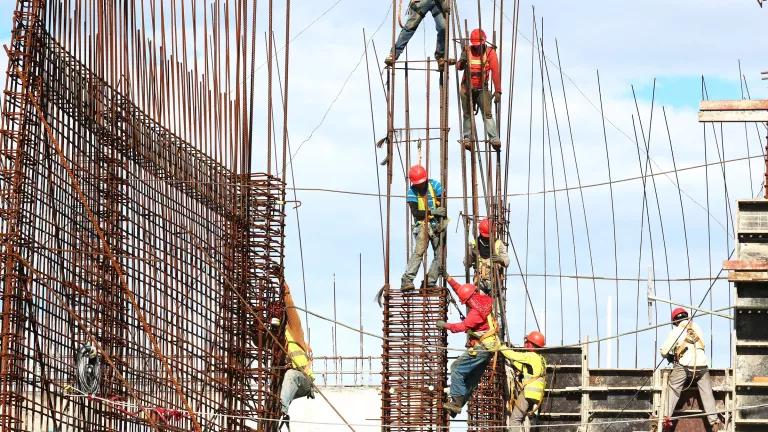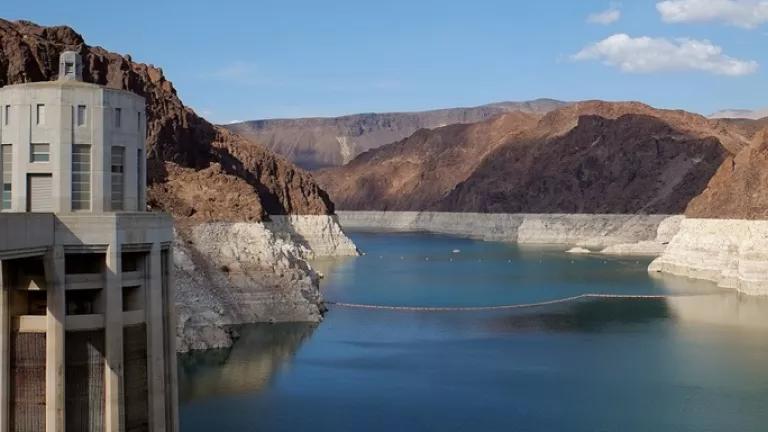Testimony: Making Water Infrastructure Resilient & Equitable
Everyone in America should have access to wastewater and stormwater infrastructure that works.
Today I had the opportunity to testify on behalf of NRDC at a House Transportation and Infrastructure subcommittee hearing on sustainable and resilient clean water infrastructure. It was an honor presenting NRDC's recommendations for updating and reforming America's water infrastructure funding programs to ensure that all communities can enjoy clean waterways, safe sanitation, and affordable water bills.
My full written testimony can be read here, and my shorter spoken testimony is copied below.
Thank you, Chair Napolitano, and good morning Chair DeFazio, Ranking Member Rouzer, and members of the Subcommittee. Thank you for the opportunity to testify today. My name is Becky Hammer, and I’m the deputy director of federal water policy for the Natural Resources Defense Council. NRDC is an international, non-profit organization working to protect public health, and ensure a safe, sustainable environment for all people.
That includes clean water. Everyone in America should have access to wastewater and stormwater infrastructure that works. No matter where they are located, these systems should provide communities with clean waterways, effective sanitation, and protection from urban flooding.
But that’s not the reality for far too many people. Across the country, polluted runoff and sewage degrade our sources of drinking water, while rainwater floods our streets and homes. Climate change is only making matters worse. Heavy precipitation and extreme storms are growing more frequent, while in some regions, water resources are becoming increasingly scarce.
The impacts of failing infrastructure and our changing climate fall disproportionately on low-income communities and communities of color, who already bear the burden of unaffordable water and sewer costs.
In light of these threats, wastewater and stormwater systems must take steps to become more resilient and sustainable.
One of the best ways to do that is by using green infrastructure, which manages water by capturing it where it falls, using vegetation, soils, and permeable surfaces. Green infrastructure reduces stormwater volumes, leading to cleaner waterways, reduced wastewater treatment needs, less flooding, and increased groundwater supplies.
It’s adaptable and cost-effective. And critically, unlike single-purpose hard infrastructure designed solely to move stormwater away from the built environment, green infrastructure provides multiple benefits to communities. It helps build resilience to flooding and other climate impacts, and it also provides climate mitigation benefits by storing carbon and reducing energy demand. And because many of green infrastructure’s benefits are hyperlocal, project implementation can be geographically targeted to enhance equity and improve access to green space in underserved areas.
The federal government should use every tool at its disposal to encourage the use of green infrastructure – including the Clean Water State Revolving Fund’s Green Project Reserve, a significant source of funding for green infrastructure and water and energy efficiency projects that has nonetheless been underutilized. Since the establishment of the Green Project Reserve in 2009, only 11 percent of total Clean Water SRF assistance has gone to Green Reserve projects, with less than 3 percent going to green infrastructure specifically.
Up till now, the Green Project Reserve has been enacted year to year in appropriations bills, and the amount allocated to it has fluctuated over time. This approach makes potential applicants uncertain about whether the Reserve will be available to support their projects in future years, depressing long-term demand for funds.
Congress can help the Green Project Reserve function more effectively by codifying it in statute, making it a permanent and stable source of funding. Ideally 20 percent of the annual SRF capitalization grant would be set aside for green projects.
Just as importantly, Congress should provide significantly more money for the Clean Water SRF as a whole – at least the $8 billion per year that’s proposed in H.R. 1915. Our communities have hundreds of millions of dollars in need, with costs increasing and the pandemic stressing utilities’ finances. Increasing the total amount of federal investment would make more funding available for all projects, including green projects.
At the same time, Congress should increase the proportion of that new funding provided as additional subsidization – in other words, grants and principal forgiveness. Additional subsidization is a lifeline for project applicants that cannot afford to take out a traditional low-interest loan, but green projects compete for subsidy with projects that serve disadvantaged communities, and there isn’t enough to go around.
Another barrier to the Green Project Reserve is the fact that many potential project applicants simply aren’t aware that it exists, while others lack the expertise to complete the application materials. Congress can reduce this obstacle by providing the states with more resources for outreach and technical assistance.
Of course, the Green Project Reserve isn’t the only mechanism available to promote sustainable water infrastructure.
Congress should set up new grant programs to diversify funding options for water resiliency efforts, and it should require climate change information to be considered in the planning of all clean water infrastructure projects as a condition of providing federal assistance.
Last but certainly not least, Congress should establish a permanent low-income water and sewer assistance program and adopt other reforms to improve water affordability. This would allow utilities to implement resilience projects and other upgrades without imposing burdens on their low-income customers.
I would be happy to discuss any of these recommendations in more detail. Thank you.



